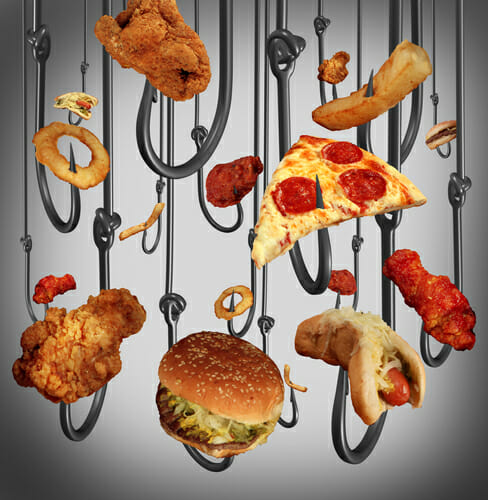
BEWARE = Ultra-processed called “Fake Foods” foods are causing widespread chronic disease and shortening life span.
LONGEVITY SECRET # 1= Eat a diet that’s nutrient rich without caloric excess.
Ultra-processed foods now account for nearly two-thirds of the calories eaten by humans in the United States. And that diet style is spreading worldwide.
In his book, Fast Food Genocide, Joel Fuhrman, MD, cites convincing evidence that the consumption of these foods is also lowering our intelligence, fostering anti-social behavior, and creating mental illness. And that the avalanche of fake food that’s taken over our nation and is spreading across the world is, in fact, feeding learning disabilities, and depression, and aggressive behavior, and even drug addiction, violence, and crime.
Reducing or eliminating our consumption of processed foods can be a challenge for a lot of us. If you were to remove all the foods from the typical supermarket that contain added sugars, you would remove 80 percent of the items in the store. The shelves would be almost empty.
The scientific literature also shows that excess calories shortens the lifespan. But nobody is talking about it even when we know. We know that studies on animals show that when they cut back their calories a little bit and feed them good nutrients, they can live one and a half times longer.
Eat longevity foods! We have the ability to essentially wipe out diseases that are so prevalent. It is exciting that we have the potential for protection against these chronic diseases.
REFERENCE Connie W. Bales and William E. Kraus, “Caloric Restriction: Implications for Human Cardiometabolic Health,” Journal of Cardiopulmonary Rehabilitation and Prevention 33, no. 4 (2013): 201–08




























